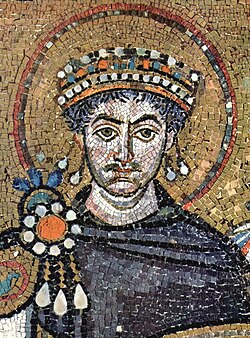John Malalas' description
The earliest [4] account of the earthquake comes from John Malalas, who recorded in his Chronographia that in the year 551 AD, during the 14th indiction, a catastrophic earthquake struck the regions of Palestine, Arabia, Mesopotamia, Antioch, Phoenice Maritima, and Phoenice Libanensis, with Tyre, Sidon, Beirut, Tripolis, Byblos, and Botrys being most affected, alongside parts of other settlements, where many people were trapped. In Botrys, part of the mountain known as Lithoprosopon, located near the sea, broke off and fell into the water, creating a harbor large enough to accommodate very large ships. This was significant, as the city had never previously had a harbor.
In response to the disaster, the emperor provided financial assistance to all the affected provinces and undertook restoration efforts for parts of the damaged cities. During the earthquake, the sea receded by a mile, destroying numerous ships, but eventually returned to its original position. [5]
Agathias' description
Agathias, a Greek poet and historian, also recounted the effects of the earthquake in his Histories:
"[...] several cities both on the islands and the mainland were razed to the ground and their inhabitants wiped out. The lovely city of Berytus, the jewel of Phoenicia, was completely ruined, and its world-famous architectural treasures were reduced to a heap of rubble, practically nothing but the bare pavements of the buildings being left. Many of the local inhabitants were crushed to death under the weight of the wreckage, as were many cultivated young men of distinguished parentage who had come there to study the Law [...] At this point, then, the professors of law moved to the neighboring city of Sidon, and the schools were transferred there until Berytus was rebuilt. The restored city was very different from what it had been in the past, though it was not changed beyond recognition, since it still preserved a few traces of its former self [...]" [6]



